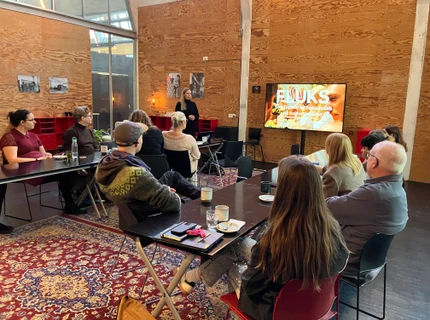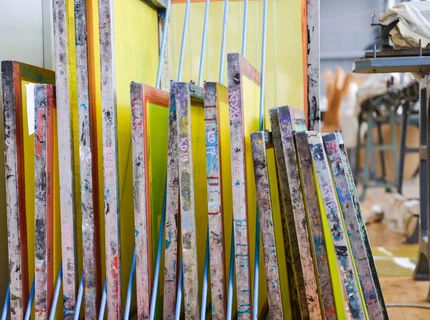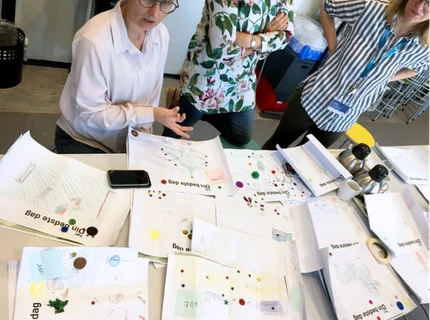
Taskforce for Child- & Youth-Centred Design
- Participants from Kolding School of Design
-
Karen Feder, Associate Prof.
Louise Aagaard, Assistant Prof.
Emilie Bech Jespersen, PhD Student
Line Gad Kristiansen, Assistant Prof.
Cecilie Ann Blicher, PhD Student
Nina Sofia Rüder, Teaching Assistant Prof.
- Project management
Kolding School of Design, LAB for Play & Design, Assistant Professor Karen Feder
- LAB
- LAB for Play Design
- LAB theme
- Playful Learning
Playful Care
Playful attractions
Play-centered Design Approaches - Collaboration partners
- Child Culture Design, Gøteborg, Sweden
University of Technology, Eindhoven, The Nederlands
Universidad de Los Andes, Bogota, Colombia
Professor Krystina Castella, ArtCenter College of Design
The Ohio State University, Columbus, US
Purpose
Have you involved the children? Or the young people? Far too many solutions are designed without consideration or understanding of those it’s all really about. Our task force steps in when the target group deserves fresh thinking and when old habits and methods no longer work. We start at the child’s level — from the child’s perspective — ensuring relevance and meaning throughout both the process and the final outcome.
The vision for our taskforce is to support the development of engaging and meaningful experiences for children and youths through design, grounded in their perspectives. Our mission is to encourage adults — including designers, educators, and policy makers — to recognise the interests, perspectives, and rights of children and youths.
We focus on research, development, and education within both the public and private sectors, collaborating locally and globally with relevant partners.
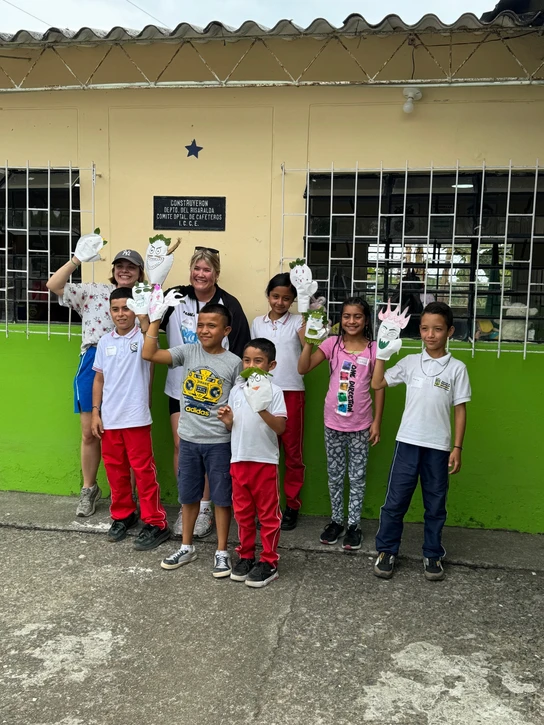

“We work to promote children’s and young people’s rights to play, participation, and influence, as set out in the UN Convention on the Rights of the Child, and to uphold their right to special care as stated in the Geneva Declaration.”
Approach
Our approach is grounded in child-centred design (Feder, 2020) and built on research and knowledge across the fields of design, play, and childhood studies. It recognises children and young people as experts in their own lives and challenges adult assumptions and agendas about childhood, children, and youth. By starting from the child’s or young person’s perspective and ensuring their voice and expression are heard, this approach both supports their rights and leads to better, more meaningful solutions for them. Play plays a key role in the approach, the process, and the final design.
We are committed to continuously exploring and investigating this field further — to understand where and how child- and youth-centred design can be applied, and what impact and value it can create. We question the existing and challenge the conventional through careful inquiry and experimentation.
Our task force leads and participates in research and development projects centred on children and young people and their everyday lives. These may include initiatives where professionals seek to make their frameworks, activities, products, or methods more child- and youth-centred, to create greater meaning for the children and young people who use them. Through practice-based design research, we explore, develop, and strengthen the child- and youth-centred design approach in real-world contexts.
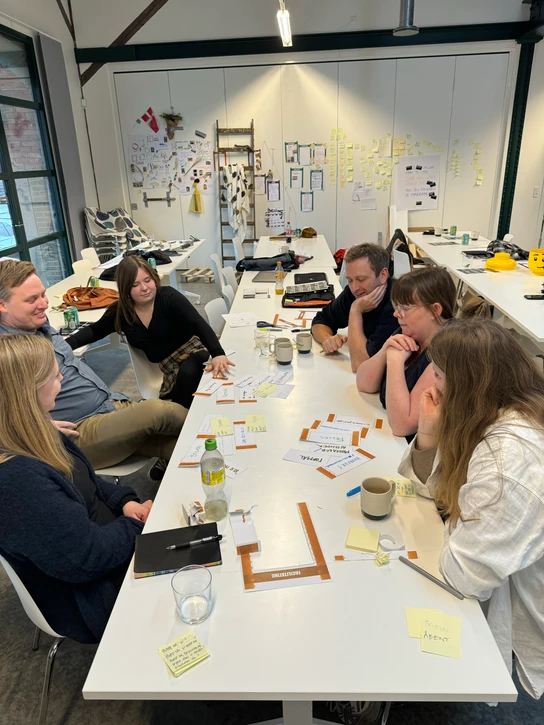
Methodology
Our work spans research and development projects, teaching, supervision, and consultancy. We take part in both our own and others’ research and practice-based studies that apply a child- and youth-centred design approach, exploring where and how it can be used, and what impact it may have. We teach bachelor’s, master’s, and PhD students in child- and youth-centred design, and we offer courses for designers and other professionals focusing on designing to, for, and with children and young people.
The methods we use are characterised by their playful nature, supporting children and young people in expressing themselves through play. Methods such as ‘Intern for a Day as a Child’, ‘Co-Creating Childhood’, and ‘Play Probes’ are grounded in research and practice and are adapted to fit the specific context and the people involved — adults, young people, and children alike. Part of the task force’s work involves developing child- and youth-centred design methods for use in development and communication processes.
We work with children and young people where they are — in their everyday environments and contexts — to ensure a better understanding of the situations being designed for. Our methods are tailored to their abilities, skills, and interests, and we always ensure that participation is voluntary. We also adhere to and continuously develop ethical guidelines for conducting research and design with children and young people.

Child-centered Design for Play

Literature
Here you can find a list of links to related articles.
-
Feder, Karen (2020). “Designing for play with a child-centred design approach”. Chapter in the book “Framing Play Design – A hands on guide for Designers, Learners & Innovators”, edited by Sune Gudiksen & Helle Marie Skovbjerg.
-
Gudiksen, S. K. & Skovbjerg, H. M. (2020). “Framing Play Design – A hands on guide for Designers, Learners & Innovators”
-
Feder, Karen (2022). ”Child-centred design decisions – how children’s participation in the design process influences students’ decisions when designing for play”. Conjunctions – Transdisciplinary Journal of Cultural Participation / Special Issue: Designing for Play as Cultural Participation in Childhood – Seeking new grounds.
-
Feder, Karen (2022). ”Internship as a child – what designers can learn through play with children”. Proceedings, DRS2022, Bilbao, Spain.
-
Feder, K., Jespersen, E. & Christiansen, L. G. (2024). ”Vi skal lege os til bedre kulturaktiviteter for børn – med play probes som børnecentreret designmetode”. Nordic journal BARN – research on children and childhood in the Nordic countries, Barn nr. 2 (2024). Article accepted February 12, 2024 – in press
-
Feder, Karen (2022). “Børnecentreret design af legeoplevelser – til børn, for børn eller med børn?”. BUKS – Tidsskrift for børne- og ungdomskultur / Designing for Play in New Nordic Childhood.
-
Christiansen, Line Gad (2022). “Meaningful Participation – Motivating young people’s participation through play probes”. BUKS – Tidsskrift for Børne- og Ungdomskultur / Designing for Play in New Nordic Childhood.
-
Christiansen, L. G. & Gudiksen, S. K. (2022). “Play probe: An approach that reveals emergent identity building in youth”. Design Research Society, Conference Series DRS2022, Bilbao
-
Lyndgaard, M., Feder, K., Tanggaard, L. & Skovbjerg, H. M. (2024). ”Ludic reading is 20 minutes a day? – Adding a socio-material perspective to ludic reading”. BUKS Journal of Child and Youth Cultures / Child Cultures: Landscapes for play, art, and explorations.
-
Feder, Karen (2020). ”Exploring a child-centred design approach – from tools and methods to approach and mindset”. PhD dissertation, Kolding School of Design
-
Christiansen, L. G. & Feder, K. (2025). “Mindbags and friendly aliens: playful design methods in policymaking” Bidrag til “IDC'25: Proceedings of the 24th Interaction Design and Children. s. 1045-1049”


